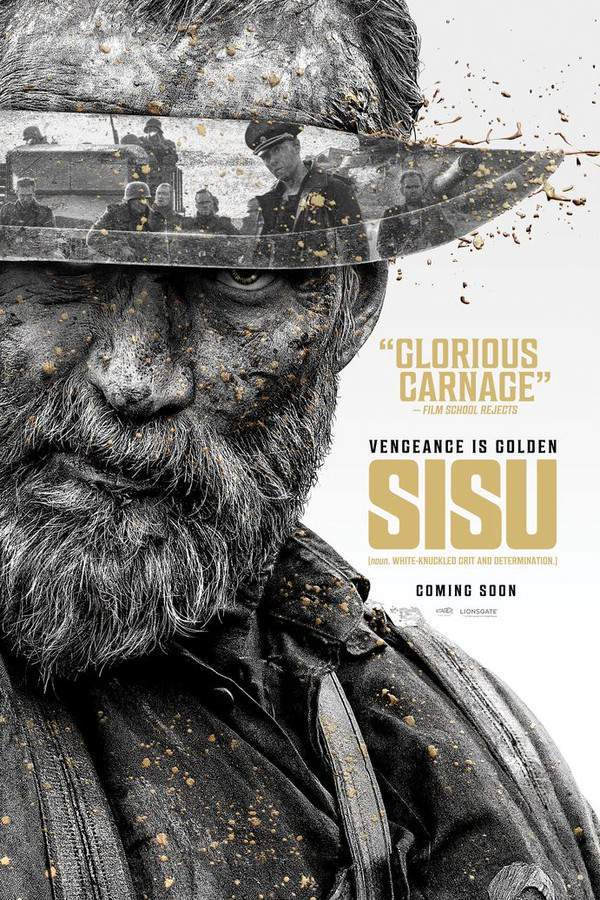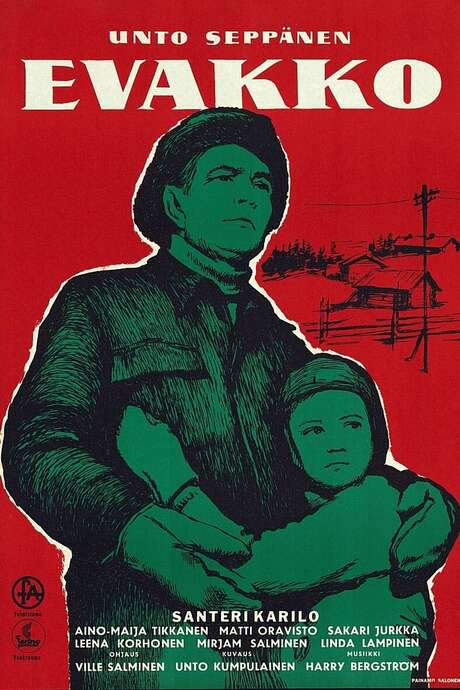
The Eternal Road
Year: 2017
Runtime: 103 mins
Language: Finnish
Director: Antti-Jussi Annila
After returning from America during the Great Depression, Jussi Ketola finds his native Finland gripped by rising political tensions. One night in 1930, he is violently abducted by nationalist extremists and forced to walk the grueling Eternal Road towards Soviet Russia. Enduring brutal treatment and facing unimaginable cruelty, Jussi’s sole desire is to reunite with his family, no matter the cost. Despite the despair surrounding him, hope remains his driving force.
Warning: spoilers below!
Haven’t seen The Eternal Road yet? This summary contains major spoilers. Bookmark the page, watch the movie, and come back for the full breakdown. If you're ready, scroll on and relive the story!
The Eternal Road (2017) – Full Plot Summary & Ending Explained
Read the complete plot breakdown of The Eternal Road (2017), including all key story events, major twists, and the ending explained in detail. Discover what really happened—and what it all means.
Jussi Ketola, Tommi Korpela, is a Finnish emigrant who rides out the hardships of the Great Depression by returning home, only to find his country sharply split in the wake of the 1917 Civil War between the victorious Whites and the Reds. A socialist and pacifist by conviction, he quickly draws the wary gaze of right‑wing nationalists from the Lapua Movement, who suspect him of Red sympathies and threaten his safety. The tension erupts one night in 1931 when local members abduct him from his home with the initial plan of forcing him across the border into Soviet Russia, or, failing that, to execute him. The sudden upheaval tests his resolve and, amid a chaotic pursuit, he manages to escape, though not unscathed—the escape is slowed by a gunshot wound as he reaches the border.
The escape scene shifts his fate northward, and he is taken to a hospital in Petrozavodsk, the capital of Soviet Karelia, where he begins the slow process of recovery. It’s in this tense limbo that he is forced to take on a new name—Jussi Kari—and is ordered to prove his loyalty by reporting to Kallonen, an NKVD official who speaks Finnish, about supposed anti‑Soviet activity in his new community. Hannu-Pekka Björkman steps into this role, embodying the pressure and surveillance that dominate Jussi’s days in a land that is supposed to be a refuge.
This new chapter unfolds in Hopea, a kolkhoz established by Finnish Americans and Finnish Canadians who had migrated to Karelia in the early 1930s to help build the “worker’s paradise” of the Soviet Union. The settlers envision a commune of work and solidarity, but Jussi’s presence there is always under watch, tempered by the NKVD’s ongoing scrutiny. The promise of sanctuary fades as the creeping fear of political purges begins to cast its long shadow. Jussi cannot return to his own family in Finland, and he must navigate the constant pressure and suspicion doled out by Kallonen and the broader security apparatus. The sense of belonging is fragile, and the community around him becomes a microcosm of the era’s tensions, where loyalty, fear, and hope jostle for survival.
As the late 1930s unfold, Stalin’s persecutions sweep through Hopea, pulling many residents into the orbit of the Great Purge. The atmosphere thickens with rumors, interrogations, and the weight of political considerations that can alter the course of a single life in an instant. Despite the mounting danger, Jussi endures, but the reprieve from execution comes at a heavy price: he is shifted to forced labor at another kolkhoz, a harsh round of punishment that tests both his endurance and his stubborn will to survive. The film immerses us in this period of coercion and resilience, painting a portrait of a man who seeks dignity and family amid the churn of state power.
In the climactic turn, when Kallonen returns to press him for information, Jussi stages a defiant stand. He attacks his interrogator, seizes the car, and makes a perilous leap toward freedom, finding his way back to the border and toward the possibility of reuniting with his Finnish family. The journey—from escape to forced labor to renewed hope—encapsulates not just a personal revival but a meditation on how political cataclysms ripple through the lives of ordinary people who strive for safety, love, and a future beyond the reach of fear. The narrative holds tightly to its core themes: displacement, the elusive search for belonging, the moral ambiguities of collaboration and resistance, and the enduring pull of home, even when the path home runs through danger and sacrifice.
Throughout this voyage, the film grounds its human drama in a historical panorama. The backdrop of the Lapua Movement, the disorienting shifts of allegiance, and the chilling reach of the NKVD create a frame in which Jussi’s private courage becomes a counterpoint to an era defined by collective coercion. The cast’s performances illuminate the tension between personal conscience and political obedience, while the setting—shared across borderlands, farms, hospitals, and checkpoints—helps convey the constant negotiation between loyalty to family and fidelity to a changing, often unforgiving, political landscape.
If you’re drawn to stories about survival under pressure, the resilience of families divided by politics, and the human cost of historical upheaval, this narrative offers a sober, measured look at a man who refuses to surrender to despair. It is a tale of endurance, cautious hope, and the stubborn pull of home, told with nuance and restraint that keeps the focus on character, choice, and consequence rather than spectacle.
Last Updated: October 09, 2025 at 15:57
Unlock the Full Story of The Eternal Road
Don't stop at just watching — explore The Eternal Road in full detail. From the complete plot summary and scene-by-scene timeline to character breakdowns, thematic analysis, and a deep dive into the ending — every page helps you truly understand what The Eternal Road is all about. Plus, discover what's next after the movie.
The Eternal Road Timeline
Track the full timeline of The Eternal Road with every major event arranged chronologically. Perfect for decoding non-linear storytelling, flashbacks, or parallel narratives with a clear scene-by-scene breakdown.

Characters, Settings & Themes in The Eternal Road
Discover the characters, locations, and core themes that shape The Eternal Road. Get insights into symbolic elements, setting significance, and deeper narrative meaning — ideal for thematic analysis and movie breakdowns.

Similar Movies to The Eternal Road
Discover movies like The Eternal Road that share similar genres, themes, and storytelling elements. Whether you’re drawn to the atmosphere, character arcs, or plot structure, these curated recommendations will help you explore more films you’ll love.
Explore More About Movie The Eternal Road
The Eternal Road (2017) Scene-by-Scene Movie Timeline
The Eternal Road (2017) Movie Characters, Themes & Settings
The Eternal Road (2017) Spoiler-Free Summary & Key Flow
Movies Like The Eternal Road – Similar Titles You’ll Enjoy
Sisu (2023) Full Summary & Key Details
Born American (1986) Movie Recap & Themes
Gotta Run! (1982) Complete Plot Breakdown
The Cold Summer of 1953 (1988) Story Summary & Characters
The Winter War (1989) Plot Summary & Ending Explained
Routasydän (1993) Film Overview & Timeline
Akseli and Elina (1970) Film Overview & Timeline
Trial on the Road (1986) Plot Summary & Ending Explained
Here, Beneath the North Star (1968) Film Overview & Timeline
The Journey (1959) Full Movie Breakdown
Back to the USSR (1992) Spoiler-Packed Plot Recap
Road to Life (1931) Detailed Story Recap
The Stolen Death (1938) Ending Explained & Film Insights
Fate of a Man (1959) Complete Plot Breakdown
Evakko (1956) Spoiler-Packed Plot Recap

















